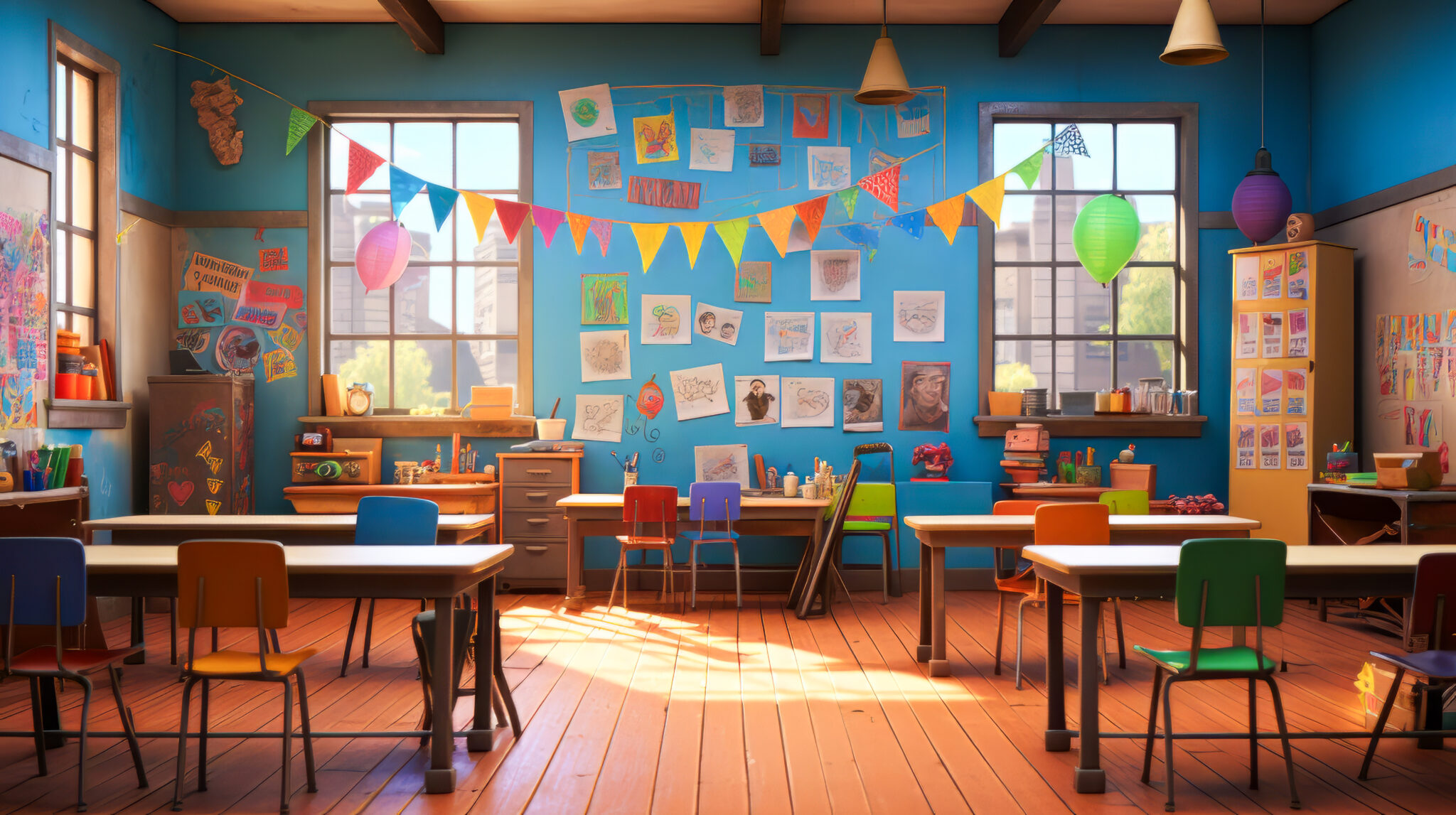The Classroom Conundrum

Is Your Classroom Distracting Your Students?
Given the recent research on the impact of visual stimuli in classrooms, educators must be mindful of the potential for over-stimulation in our learning spaces. Studies have shown that sparsely decorated classrooms can lead to a 13% increase in children's test accuracy, along with a 10% reduction in distractions. These findings highlight the importance of creating an environment that promotes focus and minimises disruptions, ultimately enhancing learning outcomes for students.
The implications of this research underscore the utmost importance of making evidence-based decisions in classroom design. By incorporating the findings from this study, we can take a significant stride towards creating an education system that not only caters to the diverse needs of our young learners, but also enhances their overall learning experience. This holistic approach will undoubtedly contribute to their academic success and lifelong development.
This isn't to suggest that we should adopt completely bare walls in our learning environments, devoid of any visual elements. Rather, it is a call for finding a harmonious balance and thoughtful consideration of the visual stimuli we introduce to our classrooms.
By carefully selecting and curating the decor, we can create an environment that enhances learning and engages students, without overwhelming or distracting them. It's about creating a space that is visually stimulating yet conducive to focus and concentration, ultimately fostering a positive and productive learning experience for all.

Strategies To Implement In The Classroom
1. Create a Consistent Routine
Having regular and structured daily routines is crucial for children as it aids in their ability to adapt to the environment, establish a sense of stability, and reduce potential distractions that could hinder their development. By providing a predictable environment, children can better navigate through their day, understand expectations, and ultimately thrive in various aspects of their lives.
2. Make Use of Focus Tools
When it comes to aiding student concentration, it's worth considering the use of helpful tools. For instance, noise-canceling headphones can create a quiet and focused environment, fidget tools can provide sensory stimulation to enhance focus, and focus apps can assist in organising tasks and minimising distractions. Incorporating these tools into the learning environment can contribute to improved concentration and productivity.
3. Encourage Mindfulness Techniques:
In order to foster a conducive learning environment, teach students the valuable skills of focusing their attention and staying present. This can be achieved through a variety of techniques, such as engaging in deep breathing exercises to promote relaxation, practicing meditation to enhance mindfulness, or even incorporating yoga to cultivate mind-body awareness.
4. Break Down Tasks
With large tasks, children can often feel overwhelmed and unsure of where to start. By breaking down these tasks into smaller, more manageable parts, we can help students maintain their focus and motivation. This approach not only aids in their productivity but also fosters a sense of accomplishment as they complete each step along the way.
5. Visualisation Techniques
Encourage and guide your students to visualise their tasks and goals in vivid detail. By creating mental images and envisioning the desired outcomes, they can enhance their focus and concentration, effectively blocking out distractions and achieving greater productivity.
6. Simplify Displayed Material
Avoid overloading with excessive information, as this can cause unnecessary distraction and hinder the intended purpose. By maintaining a balanced approach and providing just the right amount of content, you can create visually appealing displays that effectively convey the desired messages and engage the audience. Remember, less is often more when it comes to visual communication.
7. Manage Classroom Noise
This can be achieved through various means, such as using a quiet signal to indicate when it is time to be silent, setting appropriate noise levels for different activities to ensure optimal focus, and considering the use of sound-absorbing materials to reduce overall noise pollution. By paying attention to these details, teachers can help promote a calm and productive atmosphere for students to thrive in.
8. Create Defined Spaces
It is important to have well-defined areas for different activities in order to create an optimal learning environment. For instance, consider incorporating a cozy and inviting quiet reading corner, a collaborative group work area equipped with comfortable seating and ample workspace, and a spacious, uncluttered zone specifically designated for instructional purposes. By providing these distinct spaces, you can enhance engagement, focus, and productivity among learners.
9. Rotate Displays
Instead of displaying all the students' work at once, consider rotating the displays periodically to maintain interest and engagement. This approach ensures that the visual field is not overwhelmed and allows each piece of work to be appreciated individually, fostering a sense of curiosity and discovery. By introducing variety and creating anticipation, this method can enhance the overall experience for viewers and encourage them to explore each other’s diverse talents and creativity.
10. Use Calming Colours
Research suggests that incorporating calming colours, such as serene blues and soothing greens, into learning environments can significantly enhance learning efficiency and focus. When selecting wall paint or classroom decorations, it's worth considering how these colours can create a tranquil and conducive atmosphere for optimal concentration and cognitive engagement.

Creating an optimal learning environment is a collaborative and ongoing process that involves active participation from you, your students, and their parents. By fostering open lines of communication, encouraging constructive feedback, and remaining receptive to suggestions, you can continuously refine and enhance the learning experience.
If you have any concerns or questions about creating an optimal learning environment, don't hesitate to reach out to our team at 08 8448 1238! We'll be here when you need us.

Book In For Our Services
Fill out our simple contact form and we will get in touch with you as soon as possible.